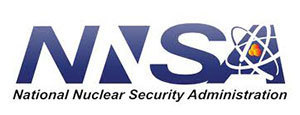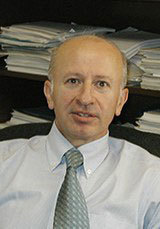
The National Nuclear Security Administration (NNSA) has selected a University of Notre Dame center as one of six new centers of excellence whose primary focus will be on the emerging field of predictive science.
The University’s Center for Shock Wave-processing of Advanced Reactive Materials (C-SWARM) was named a Single-Discipline Center by NNSA and will receive $1.6 million per year for five years under NNSA’s Predictive Science Academic Alliance Program II (PSAAP II) agreement.
Predictive science is the application of verified and validated computational simulations to predict the behavior of complex systems where routine experiments are not feasible. The selected PSAAP II centers will focus on unclassified applications of interest to NNSA and its national laboratories — Lawrence Livermore National Laboratory, Los Alamos National Laboratory and Sandia National Laboratories.
The development of controlled microstructures is a primary goal in designing novel materials with unique thermal, mechanical, electromagnetic and other properties. The main mission of C-SWARM is to predict shock conditions under which new materials can be synthesized. Such processing generates high temperature and pressure conditions that can lead to new materials being created and can turn liquids into solids. This type of processing will provide conditions under which materials would achieve enhanced properties that would be difficult to realize under conventional manufacturing. Such material transformations are governed by a plethora of physics, mechanics and chemistry that test researchers’ understanding of microstructure-property relations and their capacity to tune properties of materials at will.
 Samuel Paolucci
Samuel Paolucci
Designing materials by trial and error is time-consuming, costly and risky when shock waves and chemical reactions are present. Therefore, predictive computer simulations are critical. The NNSA grant will fund research at Notre Dame to develop predictive computational tools using models that are verified and validated with quantified uncertainty on future high-performance Exascale computer platforms (i.e., performing one quintillion operations per second). Notre Dame researchers will collaborate with colleagues from Indiana University and Purdue University.
“When a meteorite impacts the Earth, materials with unique properties, often difficult to produce by traditional manufacturing means, are created under high pressure and temperature conditions,” Samuel Paolucci, professor of aerospace and mechanical engineering and the project’s director, said. “We want to replicate these conditions through computational models using novel adaptive algorithms whose performances scale well on future Exascale computer platforms.”
Notre Dame’s team consists of Paolucci, who is a member of the Computational Physics Team; Karel Matouš, who will lead the Computational Physics Team and will serve as a software architect; Joseph Powers, who will lead the Experimental Physics Team; Peter Kogge, who is a member of the Computer Science Team; Alexander Mukasyan, who is a member of the Experimental Physics Team; and Gretar Tryggvason, who is a member of Computational Physics Team. Indiana University’s team consists of Andrew Lumsdaine, who will lead the Computer Science Team, and Thomas Sterling, also a member of Computer Science Team. Purdue’s team member is Steve Son, who is a member of Experimental Physics Team.
Contact: Samuel Paolucci, 574-631-8110, Samuel.Paolucci.1@nd.edu